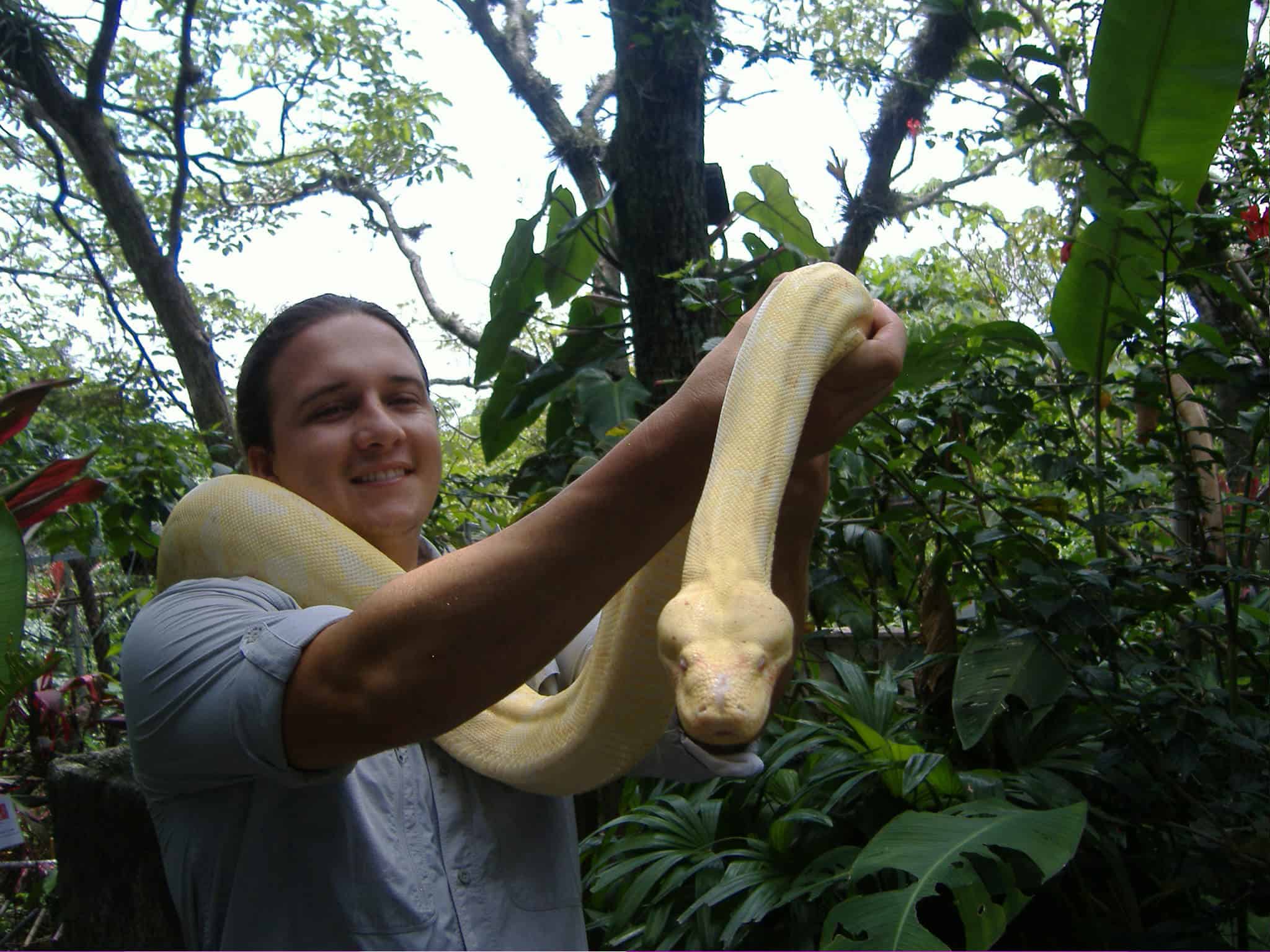Albino animals are not all that rare, says Rodolfo Vargas, founder and director of the Herpetology Refuge in Santa Ana. But in the wild they rarely grow to size. Without camouflage, they are easily seen by predators.
A fully grown, 3-meter long, white boa constrictor is therefore extremely rare. And for Vargas, it’s a delightful addition to his collection at Refugio Herpetológico, where he rescues and breeds endangered animals.
Housed in a mini-jungle along the old road through Santa Ana, southwest of Costa Rica’s capital, the refuge takes in abandoned and injured native wild animals. Some are confiscated at the airport and saved from the international animal trade. Others are brought to the shelter by the Environment Ministry.
“Many of these animals were pets,” Vargas says. “When they got too big or bothersome, their owners wanted to get rid of them.” Included in these specimens are enormous piranhas and turtles that people acquired when they were small. There is a margay, a small spotted cat, and lots of parrots, toucans and monkeys. There’s an enormous crocodile that’s missing a paw, and also some caimans. There are 80 snakes and many iguanas and lizards.
The refuge is a study center and a place where animals can live in an almost-natural setting until they can be repatriated to the wild. Some, like the parrot that lost a wing, will stay at the center permanently. The refuge is not a zoo but is a place where visitors are welcome to see and learn about Costa Rica’s animals. School classes come on field trips.
And now there is an albino boa. She is about 4 years old, according to Vargas. A man in Guanacaste had her for about two years then gave her up. Since she came to the refuge, she has given birth to 13 baby boas, all with natural coloring.
Albinism, the absence of melanin which produces pigmentation, is known in all species of animals but is more common in some than others. Vargas, who holds a master’s degree in biology, aims to breed the new, unnamed snake to see if more albinos are possible. The refuge already has three boas, one male and two females, which Vargas has successfully bred.
Right now the new snake is kept under observation and is not on display, but she will soon live in the display area with the other three boas, Vargas says.
He has always been interested in snakes and reptiles and brought his first snake home when he was 13. Now 28, his interest is not just in the animals but in conserving all of nature.
The refuge is open Tuesday-Sunday from 9 a.m.-4:30 p.m. The website, www.refugioherpetologico.com, gives a map of the site. Buses leave every 20 minutes from the Coca Cola station or the south side of La Sabana Park. Ask driver for Refugio Herpetológico.

